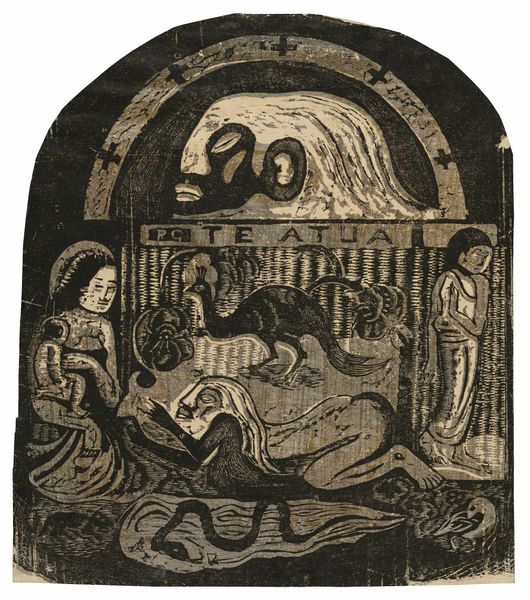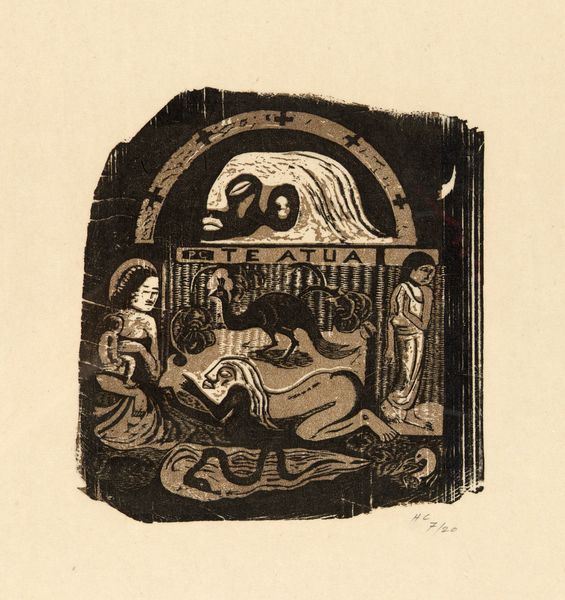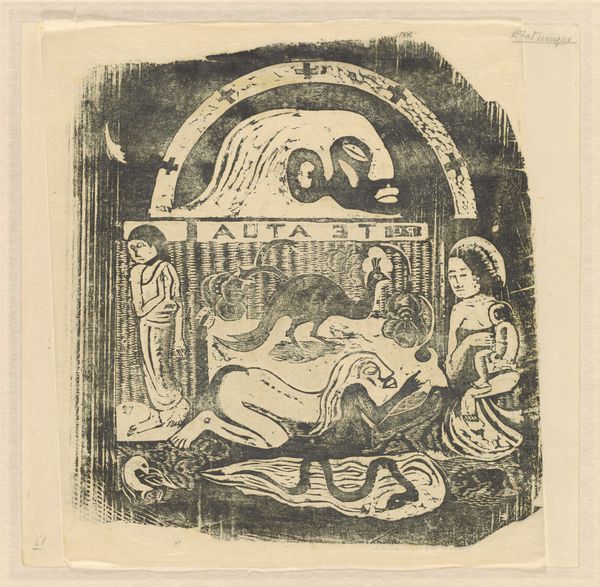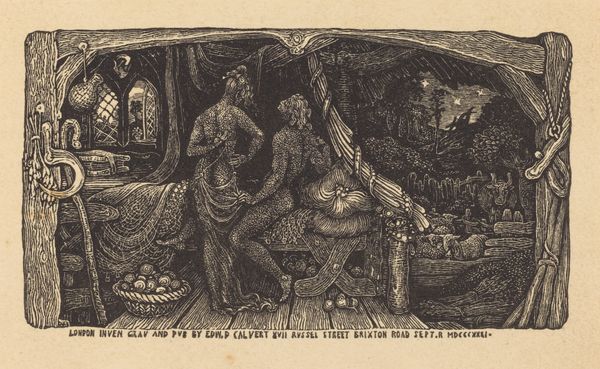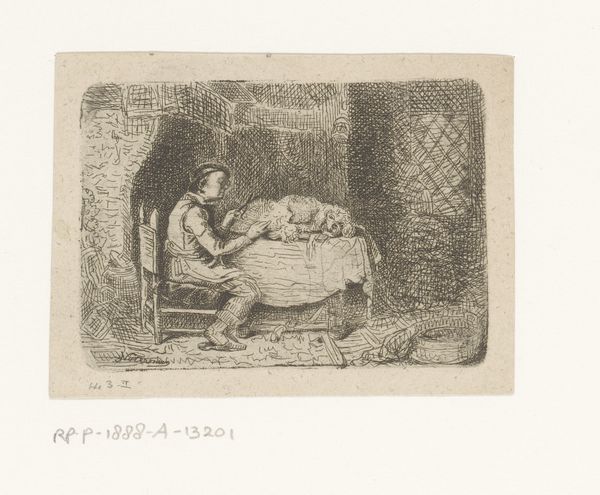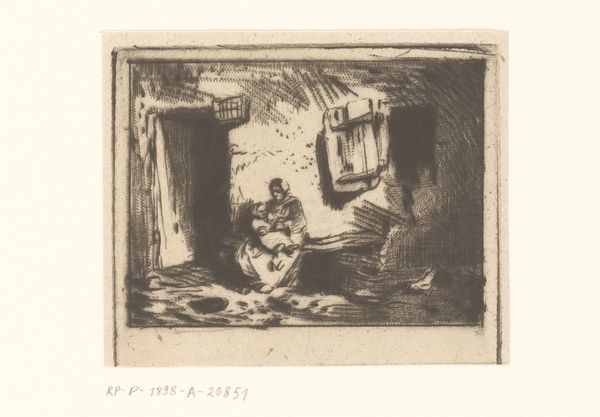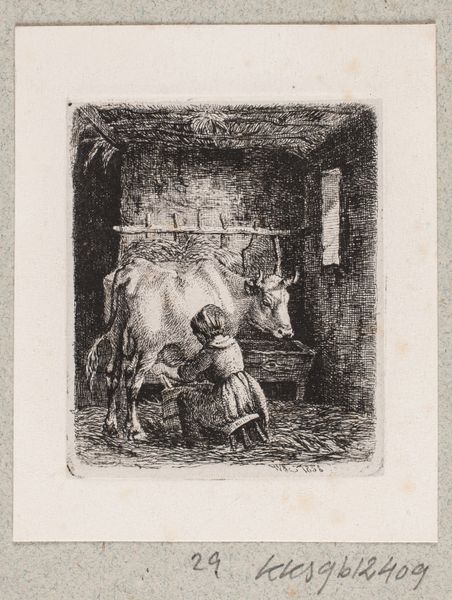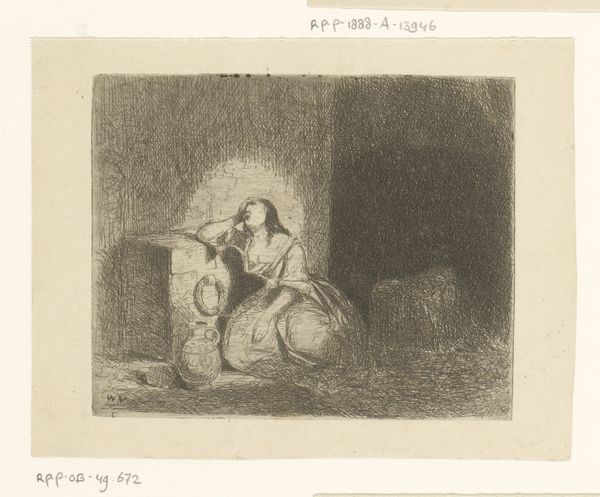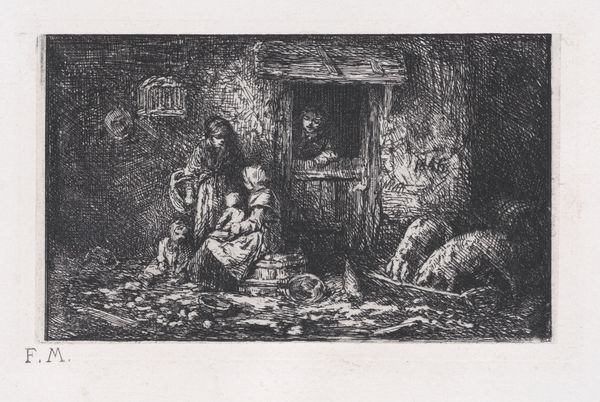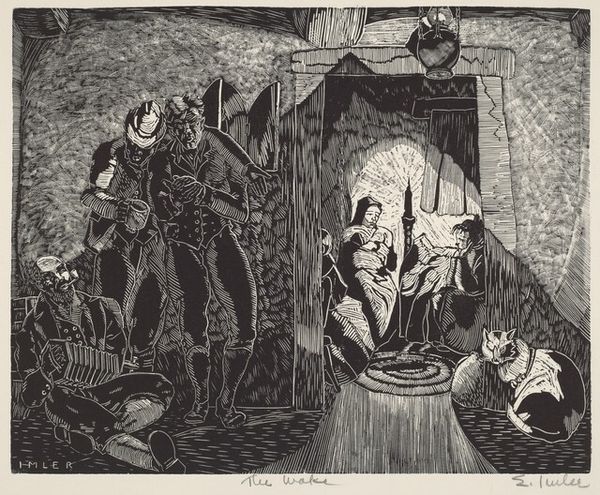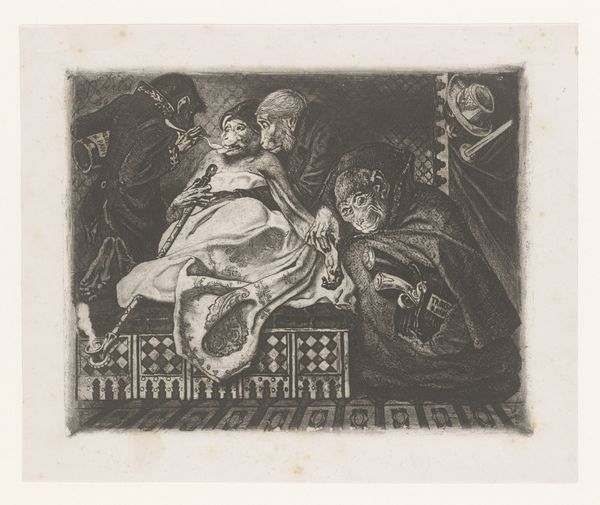
print, woodcut
#
narrative-art
# print
#
landscape
#
figuration
#
woodcut
#
symbolism
Dimensions: image: 22.5 × 20.1 cm (8 7/8 × 7 15/16 in.) sheet: 50.5 × 37.5 cm (19 7/8 × 14 3/4 in.)
Copyright: National Gallery of Art: CC0 1.0
Curator: Gauguin's "Te Atua (The Gods) Small Plate," a woodcut from after 1895...what captures your eye in this print? Editor: It's certainly striking. I find the figures compelling, and the stark contrasts lend a dramatic feel. What does this woodcut tell us about the artist's practice, beyond the imagery itself? Curator: The very nature of a woodcut is critical. Think of the labor involved: the physical act of carving the image into the wood, the limitations and possibilities inherent in the material. How does the process of carving – the removal of material to create the image – inform your understanding of the figures depicted? Editor: It makes me think about the work's authenticity and how that might have changed from when he was carving these works to how we view these artworks now as viewers from the future. Like what material constraints he might have been facing? And who might be missing from the historical narrative because of these constraints? Curator: Excellent. Gauguin intentionally rejected the smooth finish of academic painting. He embraced the rough texture and graphic quality of the woodcut. This deliberate choice was tied to his rejection of Western industrialism and a desire to connect with what he perceived as a more authentic, primal artistic expression. Editor: That makes perfect sense. Is there a way to consider this as a commodity outside of it being just an art print? Curator: Yes. We have to also acknowledge how Gauguin consumed and transformed indigenous cultures for artistic purposes, participating in the colonial gaze. "Te Atua" can be seen as an artistic statement, and an early example of globalization through trading or commodity across regions. Editor: Wow, seeing it that way really enriches the experience. The impact of materials on his practice reveals new possibilities!
Comments
No comments
Be the first to comment and join the conversation on the ultimate creative platform.
